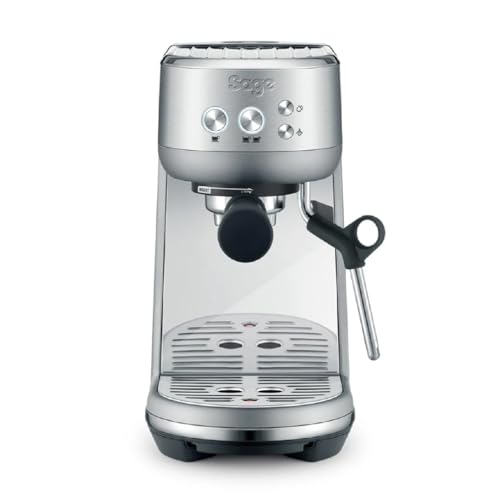How to Use a Coffee and Espresso Maker
A coffee and espresso machine produces shots of highly-pressurized water which are pushed through finely crushed, tightly packed espresso beans. The result is a strongly tasted drink with a thick crema on top.
Some machines utilize pods or grounds, allowing you to choose how strong your beverage is, while others can also steam milk for cappuccinos and lattes. There is a stovetop model that functions similar to a Moka pot.
1. Buy Guide
The most effective coffee maker and espresso maker isn't just a device that pours hot water over the grounds. It's also an item that will allow you to make cafe-quality drinks in your home. There are many options in this area and it can be overwhelming. However there are a few things to consider when choosing the best machine.
Understanding the different brewing methods is the first step. Some machines utilize gravity to filter the water through the grounds while others brew with pumps. The differences between these methods can impact the final flavor profile and cost.
The most sophisticated coffee and espresso makers are usually the most expensive. They may come with digital controls or programming options. This is why it's important to think about how often you'll use the coffee-maker and espresso maker and whether the added costs are worth the extra convenience and control.
Semiautomatic models are available at a lower cost and offer an alternative between automation and manual operation. These machines require the user to complete some work by hand, such as grinding and tamping. However they also permit a more controlled approach to beer making and are usually cheaper than fully automated models.
2. Instructions

Using a coffee and espresso maker is a straightforward process. The most important thing is to select the best ingredients and prepare the machine. It is best to use freshly ground coffee beans that have been ground on an espresso-specific burr mill. espresso. The grinder produces a fine, uniformly-sized powder that releases the finest flavor from the coffee. You can also use a steam wand to make frothy milk for lattes and cappuccinos.
It is necessary to turn on the espresso maker and let it warm up before making any drinks. This can take a few minutes, based on your machine's size. It is crucial to ensure that the machine is heating evenly. The process can be speeded up by pulling a blank, that is, to run the machine with no grounds in the portafilter. This will not just heat the cup but also flush out the group head in order to prevent a buildup of a dirty drink.
Once your machine is preheated, you'll need to insert ground beans to the portafilter. After that, you'll need to tamp the grounds to ensure that they are evenly packed. You can purchase the tamper from Amazon or at all espresso shops. Once you're finished, turn on the machine and place a small cup under each spout. To brew the espresso, simply switch the control panel to the espresso position. This activates the micro-switches that start the pump and the heating chamber, which pushes hot water through the grounds and out of the spouts.
3. Ingredients
A coffee or espresso machine can create a wide variety of drinks. In fact, these are among the most versatile brewing equipment. This is because they can create espresso and drip-based drinks.
Espresso is an intense coffee drink that is created by forcing hot high-pressure water through finely milled beans in a short time. It's typically sweeter and a little thicker than standard coffee. It's also an excellent way to get flavors that are more nuanced than those found in drip coffee, but it's not for all people.
The best espresso is dark-roasted and fairly coarsely ground to maximize flavor extraction. Vigil recommends that you "bloom" your coffee before making it by pouring hot water over the coffee grounds and waiting 20-30 minutes (releases the flavor notes). After you've added all of the hot water, you'll make use of the pressure of the machine to push the water through the grounds.
Certain machines are better at this than others. This is why some coffee and espresso makers have a bad reputation for being difficult to use. With a little practice you can make your own cafe quality espresso in the blink of an eye.
There are some other ways to make almost-espresso with no machine, for example using a siphon (a fancy glass device that uses the pressure of vapor to submerge the grounds in hot water). However, this is labor-intensive and time-consuming.
4. Preparation
Make sure your espresso maker is plugged in and preheated before you begin using it. It is important to keep the same water temperature throughout the process of brewing so that you can extract the maximum amount of flavor. It's also a good idea to "bloom" the coffee grounds, or put a small amount hot water over them, for around 30 seconds. This will release any carbon dioxide that is in the beans and help the taste of your espresso.
After the brew cycle is finished, remove the portafilter and serve. You can make espresso using an espresso maker to make single and double shots, or use a steam milk frother or wand create popular cafe drinks like lattes and capspuccinos. Add sugar to your espresso to make an extra sweet, indulgent drink.
You can utilize your espresso maker to make a pot of regular coffee as well however, you'll need to use a filter as most models don't have the capacity to make a full pot. espresso coffee machine to making a good pot coffee is starting with freshly roasted, high-quality beans that are ground to the proper consistency.
You can also play around with different kinds of water. Hard water contains more minerals that can cause mineral buildup that results in a less flavorful drink. Water that is soft or filtered can reduce this buildup.
